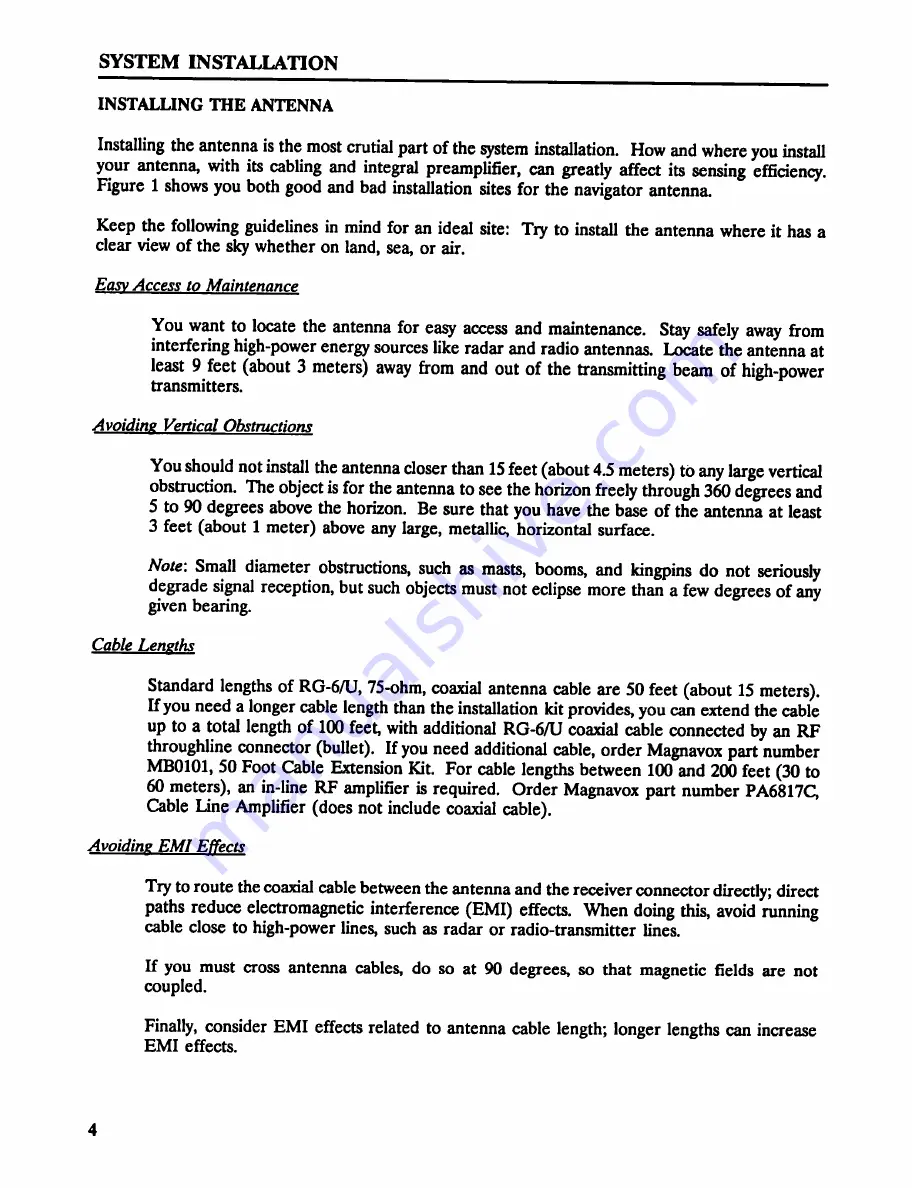
SYSTEM INSTALLATION
INSTALLING THE AN'I'ENNA
Installing the antenna is the most crutial part of the system installation. How and where you install
your antenna, with its cabling and integral preamplifier, can greatly affect its sensing efhciency.
Figure 1 shows you both good and bad installation sites for the navigator antenna.
Keep the following guidelines in mind for an ideal site: Try to install the antenna where it has a
clear view of the sky whether on land, sea, or air.
Egsy Access to Maintenance
You want to locate the antenna for easy access and maintenance. Stay safely away from
interfering high-power energy sources like radar and radio antennas. Locate the antenna at
least 9 feet (about 3 meters) away from and out of the transmitting beam of high-power
transmitters.
Avoiding Vertical Obstructions
You should not install the antenna closer than 15 feet (about 4.5 meters) to any large vertical
obstruction. The object is for the antenna to see the horizon freely through 360 degrees and
5 to 90 degrees above the horizon. Be sure that you have the base of the antenna at least
3 feet (about 1 meter) above any large, metallic, horizontal surface.
Note: Small diameter obstructions, such as masts, booms, and kingpins do not seriously
degrade signal reception, but such objects must not eclipse more than a few degrees of any
given bearing.
Cable Lengths
Standard lengths of RG-6/U, 75—ohm, coaxial antenna cable are 50 feet (about 15 meters).
Ifyou need a longer cable length than the installation kit provides, you can extend the cable
up to a total length of 100 feet, with additional RG-6/U coaxial cable connected by an RF
throughline connector (bullet). If you need additional cable, order Magnavox part number
MB0101, 50 Foot Cable Extension Kit. For cable lengths between 100 and 200 feet (30 to
60 meters), an in-line RF amplifier is required. Order Magnavox part number PA6817C,
Cable Line Amplifier (does not include coaxial cable).
Avoiding EMI Eaects
Try to route the coaxial cable between the antenna and the receiver connector directly; direct
paths reduce electromagnetic interference (EMI) effects. When doing this, avoid running
cable close to high-power lines, such as radar or radio-transmitter lines.
If you must cross antenna cables, do so at 90 degrees, so that magnetic fields are not
coupled.
Finally, consider EMI effects related to antenna cable length; longer lengths can increase
EMI effects.
4
























